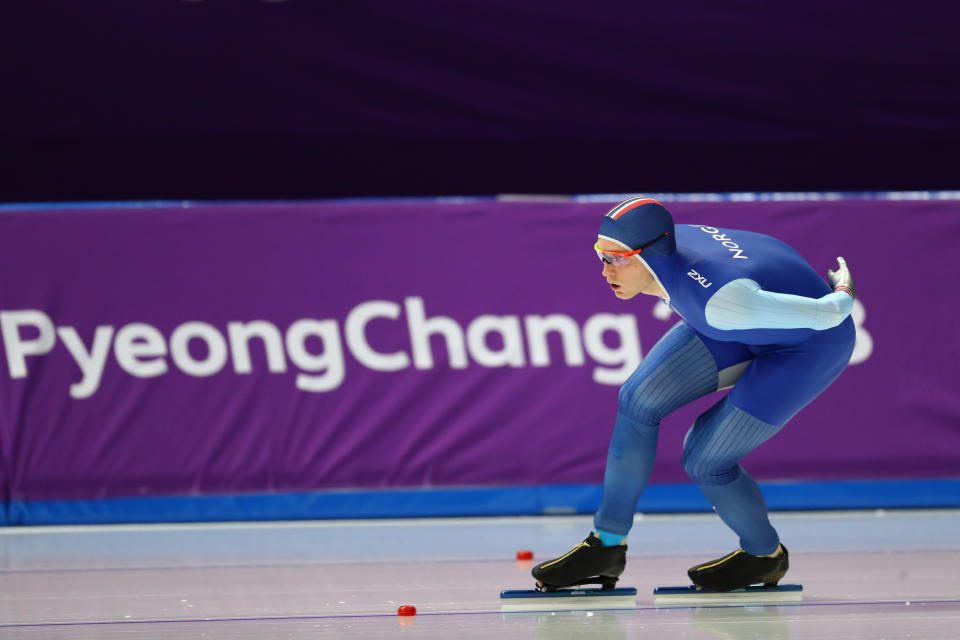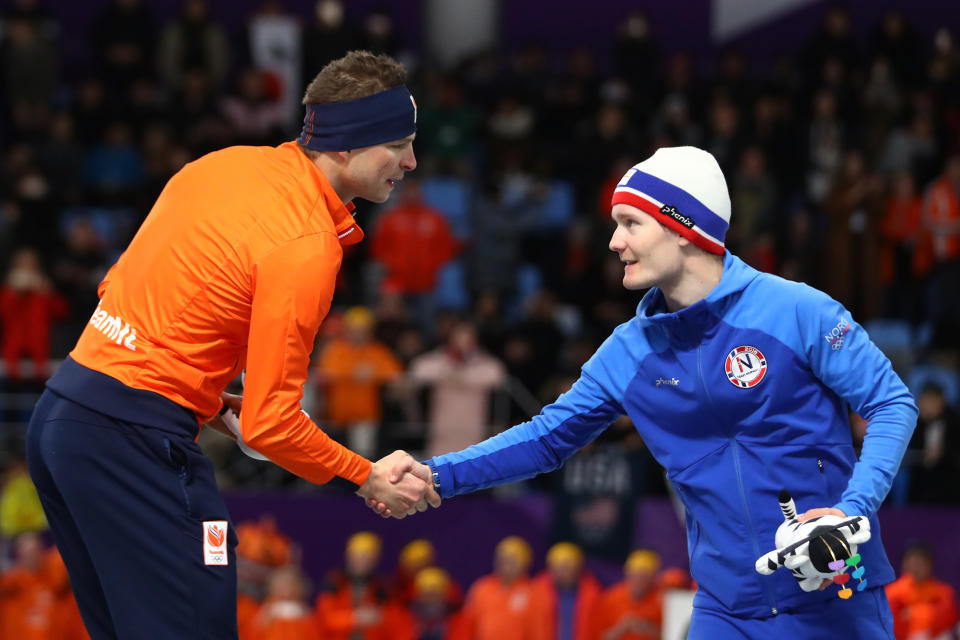Blue is faster than red, cause science
So far in the 2018 PyeongChang Olympic Games, Norway leads all countries in both the overall medal-count (8 total – 1 gold, 4 silver, 3 bronze) and egg count. But the country known mostly for its fjords and vikings have now accomplished the impossible, rewriting the physics of aerodynamic drag by way of the color blue.
At the expense of anyone who has ever taken a seventh-grade science class or possesses common sense in general, Norwegian scientists have thrown caution to the wind by proclaiming that the fastest color in the ever-evolving color-to-speed Olympic algorithm is in fact, blue.
“It’s been proven that blue is faster than other colors,” according to a sprint specialist for the Netherlands, Dai Dai Ntab, quoted in an article by (yes, seriously) the New York Times.

Just a quick note to complete your mind-blown state, the New York Times article made no indication to its readers whether or not a sarcastic tone was involved with the interview. Adding, “Every Olympic season, everybody is trying to find the hidden gem [that provides a competitive edge]. This year it’s the blue suits.”
So, is this an inside joke that no one but Norway is IN on? Is Norway THAT funny? Let’s jump into this blue-suited, head-first.
When a single millisecond of time can determine a gold medal or a fourth-place finish, every Olympic athlete on Earth will take any minuscule advantage available. Even if the advantage is only psychological it can possibly manifest into the extra inch you need between wining and losing. At this year’s Pyeongchang games in South Korea, most Olympic teams are up to the same old tricks. From aerodynamic racing suits to jackets and pants that deflect distracting light and even sound.
Enter stage left: the Norwegian speed-skating teams racing in blue uniforms this year instead of their traditional bright red suits. While evidence doesn’t suggest that the color blue is actually faster, the mind can be a chaotic carousel of motivational thought. Is it really any weirder than any other superstitions that athletes assign to their daily routine? In reality, this all comes down to creation of self-confidence, and confidence can come from anywhere, even the color blue.
Self confidence can come in many shapes and forms, so can confusion and purposeful mind games to consume an opponent. In true Lavar Ball-style marketing, the Norwegians have altered their own narrative and played a little sleight of hand in front of their opponents. Now when a Norway skater lines up at the starting line, the first thought of many (possibly including the opponent) could be, “Is blue really faster?”, thus completing the mind-bending power of the color blue.
To quote Adam Sandler in the comedy classic Billy Madison: “I drew the duck blue, because I’ve never seen a blue duck and to be honest with you, I wanted to see a blue duck.”
If you’re scratching your head in confusion like a monkey reading Ikea bookshelf assembly instructions, rest assured that you’re not alone.

“I have come to a point in my life that I have sufficient confidence in what I’ve done and what I know, but at the same time I’m not so arrogant to dismiss claims people make,” Renzo Shamey, a professor of color science and technology at North Carolina State University, which has a leading textiles program, told the New York Times.
“Having said that, based on my knowledge of dye chemistry, I cannot possibly imagine how dyeing the same fabric with two dyes that have the same properties to different hues would generate differing aerodynamic responses.”
Maybe it doesn’t need to make sense, maybe it’s just crazy enough to work. If you don’t believe the Norwegians, next time you see someone with blue eyes, challenge them to a foot race immediately and test this blue-flame theory of aerodynamics.
Hege Bokko, a Norwegian Olympic skater, told the Times: “They said [the blue] skates a little faster than red, so I like to believe that”.
Whatever you believe it or not, Norway has already been impressive at the 2018 PyeongChang Olympics and the blue uniforms seem to be doing the trick so far.
More from Yahoo Sports:
• The incredible story of Red Gerard, new teenage snowboarding hero
• Wardrobe malfunction mars routine of South Korean ice dancers
• Gus Kenworthy out, proud, and not holding back from VP Pence
• IOC member: Joint Korean hockey team should win Nobel Peace Prize
• How Russia’s Olympic fans are making a mockery of the IOC

